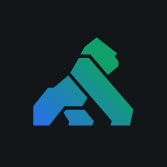In this episode of Kongcast, I had the pleasure of speaking with Aaron Weikle, the founder and CEO at MS3, about supporting legacy-based applications as companies add the next generation of microservices.
Check out the transcript and video from our conversation below, and be sure to subscribe to get email alerts for the latest new episodes.
Kaitlyn: Could you start by setting the stage for our viewers on the problems organizations run into and how this relates to common connectivity challenges?
Aaron: Our organization has been in the integration space for over a decade, and so we’ve seen the evolution of technology as it goes from a legacy-based type of B2B interconnectivity with pipe-delimited data, fixed fieldsets through SOAP integrations, and now we’re into our next generation of RESTful APIs and gRPC.
Organizations Don’t Move as Fast as Technology
There’s a lot of technical debt that organizations have strung along for decades across multiple industries. All of this needs to be supported as they're going through digital transformation. This problem is organizations want the latest and greatest, but they still need to support legacy-based protocols and interconnectivity. So we’ve come up with some solutions to help address those needs.
Kaitlyn: So one of the things we’ve talked a little bit about is how organizations in the early 2000s adopted these SOAP-based protocols, and they’re now having to figure out what to do with those services. How are you seeing organizations handling this?
Aaron: Organizations have done a variety of different things. They’ve implemented technology tooling like ESBs and provide both message and protocol-based abstractions. They’ve implemented various technologies to implement a way to hide the SOAP behind the scenes.


